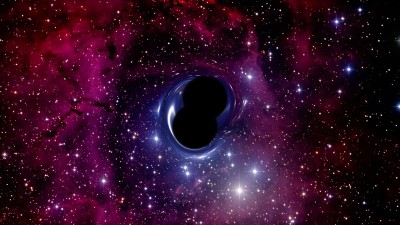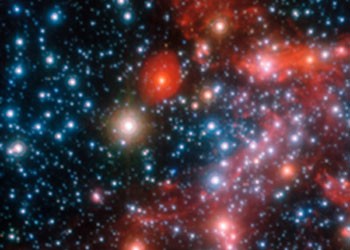
Black holes and supergravity
Supergravity combines the ideas of general relativity and supersymmetry. Loosely speaking, it is a gauge theory of local supersymmetry. Furthermore, supergravity emerges as the low-energy limit of string theory, and understanding its properties is a key to understanding string theory. Black holes are possibly the most intriguing objects in the Universe. They deform the space-time around them and prevent everything, including light, from escaping. Black holes are important objects for studying quantum gravity.
Research leads

Dr Jan Gutowski
Associate Professor

Dr Martin Wolf
Associate Professor
Overview
Supergravity is the low-energy limit of string theory, which is the most promising candidate theory capable of unifying quantum theory with general relativity. Supergravity also has solutions which describe supersymmetric black holes. Supersymmetry is a mathematical extension of the standard symmetries, such as rotations, and is a key property of string theory.
Hawking discovered that holes satisfy thermodynamic laws analogous to the laws satisfied by gases. Thermodynamic entropy is derived by examining statistical averages of microstates associated with gas molecules. For black holes in supergravity, the microstates come from higher-dimensional branes. Superposing many branes in well-defined configurations produces black holes so counting the branes gives the black hole entropy.
Systematic classifications of supersymmetric solutions have been constructed, which produced novel examples of higher dimensional black holes. In four dimensions there are particularly strong uniqueness theorems, which constrain possible black holes. However, these uniqueness theorems do not apply in higher dimensions. For example, in five dimensions, there are black rings, and even black Saturn solutions, and more complicated black holes with non-trivial topology outside the event horizon.
New spinorial geometry techniques have been used to construct classifications of solutions with more than the minimal amount of possible supersymmetry, which happens near to the event horizon of a supersymmetric black hole. This will provide useful new tools for investigating the geometry and physics of higher dimensional black holes.
Geometry and black hole physics

It is to be expected that more exotic black objects exist in higher dimensions, which is particularly relevant in the context of higher-dimensional supergravity theories associated with string theory. Notably, interesting geometric structures exist near to the event horizons of such black holes. The topology of these solutions plays a key role in the analysis.
For event horizons which are smooth, compact (i.e. have a finite area) and have no boundary, it can be shown that such solutions have certain symmetries.
Amongst other things, we analyse these types of solutions to gain new insights into the relationship between geometry and black hole physics, and there may also be interesting applications to condensed matter systems using conjectured gauge/string dualities.
Classifying anti-de Sitter supergravity solutions

We are interested in the classifications of anti-de Sitter supergravity solutions, which are particularly important in the context of the AdS/CFT duality.
In the case of two-dimensional anti-de Sitter solutions, the topology of the internal space plays a key role in determining the amount of supersymmetry preserved by these solutions.
Furthermore, combining this analysis with the homogeneity theorem for highly supersymmetric supergravity solutions, and the constraints obtained from the super-Jacobi identities in the associated superalgebras, produces strict conditions on the types of possible highly supersymmetric anti-de Sitter geometries.
There are many remaining open questions regarding the general classification of supergravity solutions, which are also of particular relevance in the context of black holes.